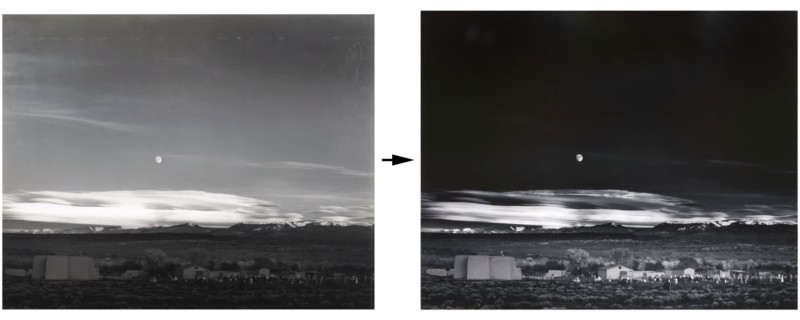Are These Photographers Cheating?
Where is the line between acceptable photo manipulation and cheating in photography? That’s the question photographer Jamie Windsor asks and explores in this new 12-minute video.

But one’s perception of the photo may change upon viewing the original contact sheet that shows all the frames Frank captured before and after the published shot.

“This was not a perfectly timed moment of genuine emotion but rather a set-up shot that Frank got after spending a while in the elevator with the girl and posing her in different ways,” Windsor says.
Windsor also points out that Ansel Adams employed significant amounts of darkroom manipulation in creating some of his most celebrated works, including “Moonrise, Hernandez“:

Renowned photographer Steve McCurry sparked controversy and debate back in 2016 after it came to light that photos he captured over the years had people and objects edited out to create better compositions. He then stated he was a visual storyteller, not a photojournalist.
“If we feel cheated by this, is it because the photographer was acting dishonestly or is it maybe because our expectations of the photographic process don’t accurately represent what photography truly is?” Windsor asks.
“The act of merely framing something means that the photographer decides what to leave in and what to leave out. It is by definition an editing of reality. In this sense, all photography is a lie.”
P.S. You can find more of Windsor’s videos by subscribing to his popular YouTube channel.